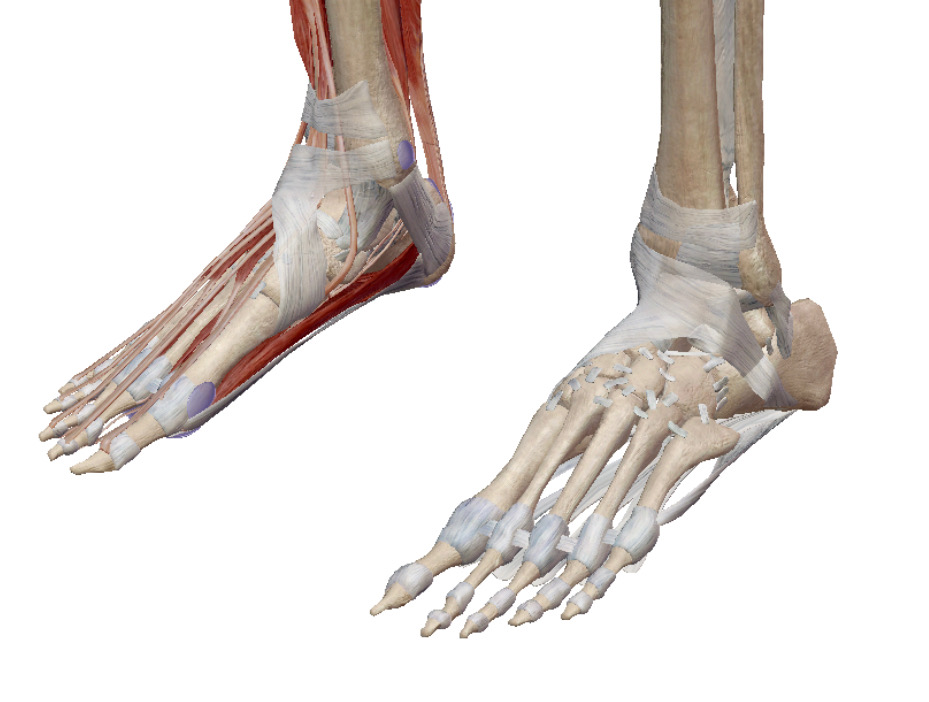
Pain can occur in the foot and ankles for a number of reasons.
The foot and ankle is made up of a number of small bones interconnected by ligaments, muscles and fascia all working together to give the strength, stability and flexibility the foot and ankle needs to function properly.
Common conditions of the foot, ankle and areas which can give rise to pain include:
Acquired flat foot
When the inner side of the foot or inner arch flattens. The foot may roll over to the inner side (known as over-pronation). It is often apparent if the heels of shoes wear out quickly and unevenly. Over-pronation can damage your ankle joint and achilles tendon (the tendon at the back of your ankle) and can also cause shin pain. Symptoms can include, pain, swelling, change in foot shape and knee pain or swelling.
Plantar fasciitis
Is pain and inflammation in the plantar fascia – the tough fibrous band of tissue that supports the arches of the foot and runs under the small bones from the underside of the heel and sole towards the toes, Often, people who have plantar fasciitis describe it as a sharp pain, most often under the heel or instep of the foot. It tends to be made worse by standing for long periods of time in poor footwear. Sufferers commonly mention that it is worse when standing after being off their feet for a long time, and it can hurt more putting the foot on the floor first thing in the morning. The sole of the foot can occasionally feel a little numb, tingly or swell slightly. In some cases of plantar fasciitis, a small spur of bone can grow where the plantar fascia attaches and pulls on the heel which can cause a sharp pain.
Achilles pain
The Achilles tendon is formed by the tendon of the two calf muscles, the gastrocnemius and soleus coming together and attaching onto the bone at the back of the heel called the calcaneus) Pain, inflammation or tendonitis in the Achilles can cause pain and tightness in this area.
Sprained ankle
Typically the result of a sudden twisting or “going over” on the ankle joint and more commonly it is the ligaments on the outside of the ankle that are strained. Typical symptoms are swelling, bruising, pain and instability of the ankle. Sometimes an x-ray is required to rule out any fracture. Rest, ice, elevation and compression are often advisable in the first 24 to 48 hours.
How can an osteopath help with foot and ankle pain?
Depending on the diagnosis and your age and fitness we can use a variety of gentle massage and manipulative techniques to increase the mobility of the joints and the flexibility of the muscles in the foot.
We will often look at muscles and joints in the lower limb, the knee, hip and lower back and may treat any joint restrictions and muscle tightness we find there. Often improving the movement in the joints of the lower will help the foot and ankle function better.
We may offer specific balancing, strengthening or loosening exercises
We may offer advice on strapping and brace supports, footwear and any lifestyle factors that might be hindering healing. We may refer you to a podiatrist for their opinion and specialist foot supports
X-rays, scans or other tests may be required to make a diagnosis and we may refer you to your GP for any additional investigations and treatment such as advice on pain killers and anti-inflammatory medications